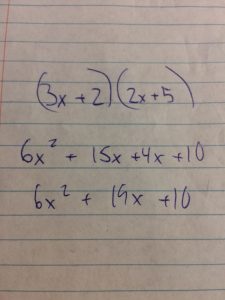Here are 5 things that will help you in Ms. Pahlevanlu’s math 10 class.
1. Do the blog posts. Yes they’re not that interesting but it’s best not to let them accumulate.
2. Listen. Ms. P’s lessons are really not hard to follow and don’t usually take that long. So at least pay attention so you don’t have to re-learn the lesson later.
3. Don’t stress. As the daily homework is not checked it is up to you how prepared you want to be. So don’t over-exert yourself doing extra practice if you don’t need it.
4. Ask for help if you need it. Ms P is very approachable and you have lots of class time to get the help you require.
5. Study. The tests aren’t ridiculously challenging bu to succeed or obtain the mark you would like you will need to study or have a general knowledge of what you are learning.





